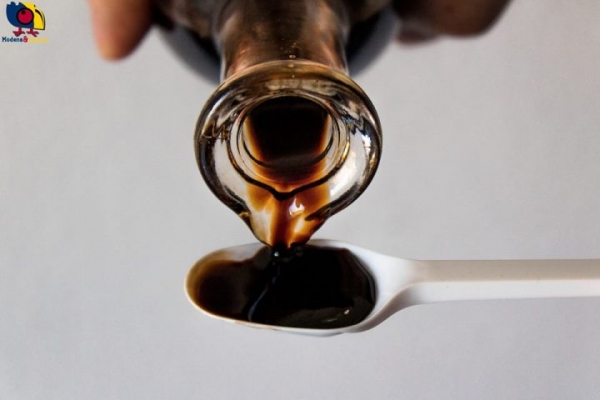There are no words to describe it, there is only the memory of a moment of ecstasy, to be felt at least once in life and to be remembered forever! I'm talking about the Traditional Balsamic Vinegar of Modena and Reggio Emilia, a vinegar that is not vinegar, the most valuable of seasonings (in any sense, the economic one too). I love it, I would eat it with every dish, salad, cheeses, strawberries, but also meat and fish (my favourite? Little onions). But any time I get close to it, it’s like approaching an old lady: I do it with respect, because it is a witness of the past.
A true dowry for young brides, the Balsamic Vinegar was a part of the family heritage in Modena. Jealously guarded in the attic of the houses, its secrets were handed down from father to son, safeguarding the recipe of a prodigious elixir. As a proof of its historical prestige, let me just say that an ampoule of Balsamic Vinegar was offered by Hercules III Duke of Modena to Francis of Austria as a gift when he crowned emperor in 1792.
Now, some history, as usual. There are many kinds of vinegar around the world, some of them have been produced since the 3rd millennium BC, they can come not only from grapes but also from apple musts, dates and figs. However, Modena’s Balsamic Vinegar is essentially a cooked must and the cooking process is more recent, around 1000 BC.
It is said that in 1046, while he stopped in nearby Piacenza, the king and future emperor Henry II of Franconia sent a messenger to the Marquis Bonifacio of Canossa, father of Matilda, "Because he wanted that vinegar that had been praised and that was made in the fortress of Canossa".
The official history of the Traditional Balsamic Vinegar of Modena and Reggio Emilia begins in 1605 when, in a census of all commercial activities ordered by the Duke Cesare d’Este for the transfer of the capital of the Duchy from Ferrara to Modena, the first workshop with “acetaia” belonging to a man named Giusti is mentioned. That Acetaia still exists, its name is still Acetaia Giusti. 400 years, 4 centuries, an eternity.
Then, in 1792, the gift to the future Emperor of Austria we mentioned above. But in 1803 the French, in their dominating fury, decided that Balsamic Vinegar was not an Empire thing (they probably wanted to eliminate a competitor of their toppings) and auctioned off the ducal "batteries". Fortunately, the heritage was not lost as they were purchased by some local noblemen, to enrich their own “acetaia”; this way, Balsamic Vinegar became common in several homes of Modena. The batteries returned to the Estense family once it regained control of the city, after 1815. Finally, in 1860 Francesco Aggazzotti, starting from a manuscript of an anonymous of the 18th century, codified the production principles of the Traditional Balsamic Vinegar of Modena and Reggio Emilia.
The name comes from the fact that in the past this vinegar was thought to have healing properties and was considered more a drug than a food. The "Balsamic" was recommended for those suffering from sore throats, stomach aches and respiratory problems. Actually, the Balsamic Vinegar is rich in antioxidants which strengthen the immune system, reduce blood pressure, help digestion and have disinfectant properties. A somewhat expensive remedy, given the prices.

To make a perfect Balsamic you must control three elements: grapes, woods and time.
Seven varieties of grapes are used (Trebbiano, Lambrusco, Albana, Sangiovese, Fortana, Montuni and Ancellotta) and they must be produced exclusively in the provinces of Modena and Reggio Emilia. They should be harvested as late as possible, to retain most perfumes and sugars. The grapes are then cooked in copper or steel containers for several hours, over direct heat at a temperature of about 80 °C Celsius, to reach the desired sugar concentration. Cooking is one of the most delicate steps: it increases the product density, caramelizes sugars and pasteurizes the must, making way for new yeasts and acetobacteria. The must is then sealed in glass jugs or plastic canisters, where it will ferment for a few months.
At this point, it's time to move into the Acetaia. The “Acetaia” is the silent heart of the production process: if making wine requires winery rooms to be kept at constant, fairly low temperatures, the Traditional Balsamic needs wide temperature fluctuations and strong excursions between summer and winter. That’s why the Acetaia is mostly situated inside an attic, where it is exposed to seasonal temperature changes.
The so-called “avviamento della batteria” (starting the battery) is probably the most symbolic moment and, at the same time, the simplest one. The battery is nothing more than a series of barrels with different capacities; the barrels are technically bound together by the technique of refilling and cannot be exchanged with each other. Starting a new battery was usually the choice of the head of the family, to celebrate important events, for instance, the birth of a new heir. Even in our days, in some “Acetaie” a new battery is implanted at the birth of a female daughter: 25 years later, it will be the bride’s dowry.
Now, here we have the second element: the wood of the barrels. The battery is usually composed of 5 to 7 barrels of decreasing size: the largest can hold about 60-70 litres, the smallest from 15 to 20 litres. The barrels, which must have had continuous contact with vinegar for at least 20 years, are made with different types of woods (oak, cherry, ash, chestnut, juniper and mulberry), giving the product a natural aroma and affecting its texture and colour. The alternation of the woods within the battery contributes to the unique characterization of the product, giving it its typical scents and aromas. There is no fixed rule; each producer can alternate barrels and woods freely, depending on his taste and the amount of product he wants to get. All barrels have an opening called "cocchiume", to monitor the vinegar and all its reactions; the “cocchiume” is never closed completely, to favour the evaporation of watery steam, they just put a piece of rectangular cloth on the opening and then block it.
Finally, the 3rd element: time. Annually, during the cold season, a quantity of product (on average 25-30% of the total content) is taken from the smallest barrel of the series if deemed suitable for commercialization. The liquid of the smaller barrel is then brought back to a level of about 2/3 of the total with a part of the liquid of the barrel immediately larger. This, in turn, is brought back to the level with the third, and so back to the main barrel, the barrel "mother" or Badessa", filled with the cooked must of the year.

The product ageing varies from 12 years (the “affinato", refined) to more than 25 years (in which case it can be called "Stravecchio"). During the first 12 years, as a result of evaporation and losses of the barrels, the level of vinegar in the barrels is kept constant at about 2/3 of their capacity. On the 13th year, producers can start spilling it. The product is protected by the "Consorzio dei Produttori dell’Aceto Balsamico Tradizionale” and only after passing a series of sensory checks by a committee of expert tasters, it is bottled in a 100cc bottle, with a unique shape for all producers (designed by the Italian designer Giorgetto Giugiaro). Bottling can only take place within the borders of the provinces of Modena or Reggio Emilia; each bottle is numbered and closed with guarantee seal and for each lot the Consortium holds a product sample, to guarantee the quality of the batch of matching bottles.
With meat, on fish, in salads, even to accompany fruits and ice cream: the Traditional Balsamic Vinegar of Modena and Reggio Emilia has a taste so unique and at the same time versatile that it is not only instantly recognizable but also gets along well with all the dishes of a menu, be it based on animal proteins, vegetable fibres or dairy products.

I still remember my first visit to an Acetaia, the Acetaia Villa San Donnino. Visiting it with Davide, the owner, and stopping to talk to him in the attic of his villa was an unforgettable moment. It is a memory made of perfumes, the scent of impregnated wood, of colours, dark, shiny and clear, of a particular flavour in which sour and sweet are perfectly balanced. I came back many times to Modena, but I will never forget the surprise of the first time. That's why, whenever I can, I include Modena in my itineraries: I want my fellow travellers to have the opportunity, at least once in their lives, to experience the same sensations that I felt. So, see you in Modena, for a tribute to an old friend.
Ciao da Marcello

